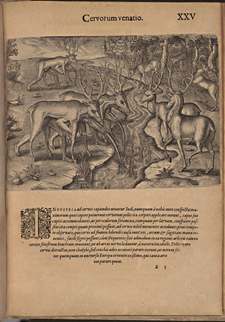
Vanished Worlds, Enduring People
Opening a Transatlantic World
Theodor de Bry. America, pt. 2. Brevis Narratio Eorvm Qvæ in Florida. T. de Bry, 1591. [view]
De Bry and his sons, Dutch Protestant engravers living in Frankfurt to escape Spanish domination of their homeland, embarked on a monumental project to edit and illustrate volumes chronicling European expeditions to the Americas. Their celebrated engravings are among the first detailed images of the New World. By 1634, they had published thirteen parts comprising thirty books. The de Bry engravings depicted Native Americans in a Classical style, contributing to the Western idea of Indians as “noble savages.” They also cast Spaniards as savages who killed and mutilated native people. These engravings served as powerful propaganda instruments in the contemporary struggle against the Spanish Empire. Their frequent reproduction in subsequent publications would preserve the anti-Spanish message for decades to come. Here, in a plate adapted from the work of Jacques Le Moyne de Morgues, the Timucua Indians in Florida are shown hunting, wearing deer disguises.